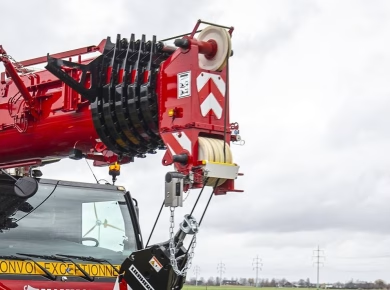Every day on construction sites, the rhythm of hard hats and heavy machinery is punctuated by a less visible but equally important danger: the risk of dropped tools. A wrench, a drill, or even a simple screwdriver can tumble from heights, transforming into a projectile that can cause serious injuries to workers below. This isn’t just a safety concern; it’s a potential legal nightmare. In my years of navigating the complexities of site management and compliance training, I’ve seen firsthand how something as simple as a $10 tool lanyard can be the difference between a minor inconvenience and a catastrophic lawsuit.
Understanding the Risks of Dropped Tools
The statistics surrounding dropped tools are alarming. The Occupational Safety and Health Administration (OSHA) highlights that falling objects are a leading cause of injuries on construction sites. Just last year, a colleague shared a story about a worker who suffered a concussion after a tool fell from a scaffold. The aftermath involved not only medical treatment but also an extensive lawsuit that drained resources and morale. This incident, while extreme, is a stark reminder of what’s at stake.
The Financial Implications
Beyond injuries, consider the financial implications of these incidents. Lawsuits can easily exceed $10,000 when you factor in medical expenses, lost wages, and potential fines. Implementing simple safety measures like tool lanyards can drastically reduce these risks. For a minimal investment, you can protect your team and your bottom line.
Why Lanyards Matter
Tool lanyards are designed to secure tools to your body or scaffolding, ensuring they remain within reach—even when you’re working at heights. They prevent tools from falling, thereby safeguarding your crew and bystanders. But their benefits extend beyond just preventing injuries.
Enhancing Efficiency
In addition to safety, tool lanyards can enhance productivity. When tools are secured, workers spend less time retrieving dropped items and more time focusing on the task at hand. I’ve observed teams that use lanyards work more efficiently because they’re not constantly stopping to pick up tools. This increase in efficiency can lead to project completions ahead of schedule, further benefiting your organization.
Choosing the Right Tool Lanyards
Not all lanyards are created equal. When selecting tool lanyards for your team, consider the weight and type of tools they’ll be securing. A lanyard designed for a lightweight screwdriver may not hold up under the weight of a heavy drill.
Material and Durability
Look for lanyards made of high-quality materials like nylon or polyester, which offer durability and resistance to wear and tear. The last thing you want is a lanyard that snaps under pressure. Additionally, adjustable lengths can help accommodate various working conditions, ensuring that tools remain easy to access without becoming a hazard.
Implementing Lanyard Policies on Site
Once you’ve invested in tool lanyards, it’s essential to integrate them into your safety protocols. Training sessions can be an effective way to educate your team about the importance of using lanyards.
Creating a Culture of Safety
Fostering a culture of safety is paramount. Encourage your team to take ownership of their safety practices. Incorporate lanyard use into daily safety briefings and make it a part of the standard operating procedure. When everyone understands the risks and the solutions, compliance becomes a collective responsibility rather than an individual chore.
Real-World Applications and Success Stories
Consider a recent project where a general contractor implemented mandatory tool lanyard use across all work teams. Initially met with resistance, the contractor held a demonstration showing how quickly and easily the lanyards could secure tools. Within weeks, not only did the number of near-miss incidents decrease, but the team also reported feeling more secure in their work environment.
Lessons Learned
This success story illustrates the importance of engaging your team in safety measures. The contractor didn’t just mandate the use of lanyards; they made it a part of the site culture. This approach fosters an environment where safety is prioritized, ultimately leading to better compliance and fewer accidents.
Conclusion: Invest in Safety, Invest in Your Team
In the fast-paced world of construction and site management, the smallest investments can yield the most significant returns. A $10 tool lanyard is more than just a piece of equipment; it’s a commitment to safety and efficiency that can save your organization from costly lawsuits and protect your most valuable asset—your team. By integrating tool lanyards into your safety protocols, you’re not just complying with regulations; you’re actively fostering a culture that values the wellbeing of every worker on site. Take the step today to ensure that your team is equipped for safety, and watch how it transforms your work environment.


